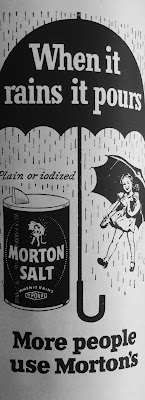"History. Vision. Grit." Janesville City Hall Mural
Janesville: An American Story by Amy Goldstein has won many accolades, including 100 Notable Books in 2017 from the New York Times Book Review and the McKinsey Business Book of the Year.
Goldstein presents the story of a town and its people coping with the closing of the GM factory and how the town and families worked to reinvent themselves.
Janesville, WI was a tight-knit community with a successful history of factories beginning with cotton mills in the late 19th c, including Parker Pens and the GM auto assembly plant and the factories that supplied it.
The book covers five years, beginning in 2008 with Paul Ryan, a Janesville native, receiving the phone call from GM informing him of their decision to close the Janesville plant. Goldstein portrays the impact on employees and their families: the cascading job losses, the ineffectual retraining programs, the engulfing poverty, the men who take employment at plants in other states and see their families a few hours a week, teenagers working to help keep food on the table while preparing for college.
This is one of those non-fiction books that is engrossing while being informative, bringing readers into the struggles, successes, and failures of individual families. If you want to know about the people who have lost the American Dream, the impact of business and political decisions, and what programs 'work' and which have not delivered, then Janesville is for you.
Simon & Schuster
$16 paperback
ISBN 9781501102264
Getting Personal
I married into a GM family. My father-in-law had a white-collar job at Fisher Body in Flint and ordered supplies to be sent to Janesville, WI. My husband worked as a welder on the line several summers while in college.
 |
| My father-in-law's Fisher Body pins |
I noted her family all called her Girl. I learned the nickname dated to when she was the only woman on the floor and when the men wanted her help, they would call, "Girl!"
Girl was part of the Woman's Emergency Brigade and delivered food during the 1936-7 sit-down strike and was a proud Union member.
Girl's oldest boy, like his dad, had TB. Her youngest son worked for the CCC, took classes at Baker College, and got a job as a clerk at the auto factory where his mother was a machine operator. Together, in 1940, their income was $2,228.
When my husband and I would visit his folks sometimes they would take us on a drive to see the old factories. And over the years we were very aware of how, briefly, the auto industry offered our families great opportunities. My father-in-law sent three boys to college and had a comfortable early retirement. My own father had relocated to Metro Detroit for a job in the auto industry, and we had a good working-class life and important benefits as my mother suffered from chronic health issues.
from the publisher's website:
* Financial Times and McKinsey Business Book of the Year * 800-CEO-READ Business Book of the Year * A New York Times Notable Book * A Washington Post Notable Book * An NPR Best Book of 2017 * A Wall Street Journal Best Book of 2017 * An Economist Best Book of 2017 * A Business Insider Best Book of 2017 *
“A gripping story of psychological defeat and resilience” (Bob Woodward, The Washington Post)—an intimate account of the fallout from the closing of a General Motors assembly plant in Janesville, Wisconsin, and a larger story of the hollowing of the American middle class.
This is the story of what happens to an industrial town in the American heartland when its main factory shuts down—but it’s not the familiar tale. Most observers record the immediate shock of vanished jobs, but few stay around long enough to notice what happens next when a community with a can-do spirit tries to pick itself up.
Pulitzer Prize–winning reporter Amy Goldstein spent years immersed in Janesville, Wisconsin, where the nation’s oldest operating General Motors assembly plant shut down in the midst of the Great Recession. Now, with intelligence, sympathy, and insight into what connects and divides people in an era of economic upheaval, Goldstein shows the consequences of one of America’s biggest political issues. Her reporting takes the reader deep into the lives of autoworkers, educators, bankers, politicians, and job re-trainers to show why it’s so hard in the twenty-first century to recreate a healthy, prosperous working class.



















































